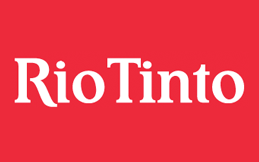|
 Rio Tinto has demonstrated how the completion of its world-class iron ore expansion project in Western Australia will deliver significant shareholder value as the sector transitions through the ongoing volatility in global commodity markets. Rio Tinto has demonstrated how the completion of its world-class iron ore expansion project in Western Australia will deliver significant shareholder value as the sector transitions through the ongoing volatility in global commodity markets.
At an investor seminar in Sydney today, Rio Tinto outlined the next phase in its long-term strategy to capitalise on the growing global demand for high-quality iron ore through a relentless focus on productivity and efficiency, technology, and people development to drive costs lower at its Pilbara operations.
Rio Tinto also revealed new detail on the data underpinning its projections for 2.5 per cent average annual growth for steel demand across China and the rest of the world over the next 15 years.
This rigorous analysis confirms that Chinese crude steel production is expected to reach around one billion tonnes by 2030.
Emerging markets will also play an increasingly significant role in the iron ore market, with non-Chinese steel demand expected to increase by 65 per cent by 2030.
Rio Tinto Iron Ore chief executive Andrew Harding said “As we move into our 50th year of exports from Australia, Rio Tinto is embarking on a new phase in our iron ore business.
“We have spent the past decade building the best iron ore business in the world – a project that has come in on time and below initial cost estimates. We intend to optimise these new assets to deliver maximum value for shareholders and stakeholders as markets transition.
“Our long-term strategy is supported by comprehensive market analysis, leadership in people, world-class technology and an unrelenting pursuit of productivity improvements. Rio Tinto has some of the best tier one mining assets in the world and our workplace culture of chasing new efficiencies will ensure we remain the best iron ore producer in the industry.
“We are also focused on realising further costs savings through some 400 efficiency initiatives across the Pilbara.”
Rio Tinto Technology and Innovation chief executive Greg Lilleyman said “Our sector-leading Mine of the Future programme is already delivering significant group-wide productivity improvements.
“Rio Tinto’s first-mover status in autonomous equipment has resulted in significant productivity gains while our use of big data analytics has allowed us to safely extend maintenance cycles.
“These productivity gains, combined with our asset management programme, have us on a pathway to safely reduce maintenance costs by about $200 million a year over the next three years.
“The Technology and Innovation team is also ensuring that Rio Tinto not only undertakes the right projects but when we do them, we do them right.”
Key points – Iron Ore
- Pilbara infrastructure project delivered on time and at a capital cost below initial estimates.
- Pilbara infrastructure and mine development project involved a capital spend of $US14.7 billion and employed more than 10,000 people.
- Iron Ore operating costs reduced by almost $US1 billion compared to 2012.
- Cash costs of $US16.20 a tonne in the first half of 2015, compared with $US20.40 a tonne for the same period last year. As we revealed at half year results on 8 August 2015, taking into account current currency and energy prices, this is around $15.20 a tonne.
- Some 400 initiatives underway across the Pilbara to identify further savings and improve productivity.
- Rio Tinto consistently achieves a higher average price than all other Pilbara producers.
- Rio Tinto’s Pilbara Blend remains the most recognised brand in the global steel industry.
- Construction of Cape Lambert Port B has been completed to increase overall Cape Lambert port capacity to more than 200 million tonnes a year.
Key points – Productivity
- Automation is delivering significant productivity benefits and savings.
- Labour productivity increased by 12 per cent in the first half of 2015 compared with last year.
- 400 million tonnes of material moved by autonomous trucks in the Pilbara.
- Autonomous trucks are 12 per cent more productive than the manned fleet and there has been a 13 per cent reduction in load and haul costs due to autonomous truck efficiencies.
- Autonomous drills are 10 per cent more available than manned drills, resulting in an operational saving of 8 per cent.
- Using predictive analytics and enhanced maintenance planning systems, we expect to reduce maintenance costs by $US200 million a year over the next three years.
- 250 train journeys in automated mode.
Key points – market outlook
- Global steel demand will grow by around 2.5 per cent per year between now and 2030.
- Global iron ore demand will increase to three billion tonnes in 2030.
- Chinese crude steel production is expected to reach around one billion tonnes by 2030.
- 220 million Chinese are expected to urbanise in the next 15 years, compared with 320 million between 2000 and 2015.
- 120 million tonnes in marginal iron ore supply is expected to exit the market in 2015 with a further 45 million tonnes ‘at risk’ of exiting.
|